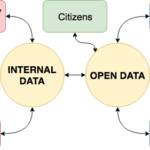Bridging the ‘Off-Grid/On-Grid’ Divide: How Grid Integration Can Build the Energy System of the Future
The lives of the residents of the remote Bangladeshi village Shikarpur have been recently transformed. For decades, most residents had little choice but to use kerosene for lighting their homes – just like tens of millions of other households throughout the developing world. But a little over a year ago, an award-winning startup called SOLshare introduced them to what it calls “swarm electrification.”
The concept could be described as “Airbnb for the energy world”: It enables villagers to create mini-grids – peer-to-peer solar energy trading platforms based on distributed ledger technology – by interconnecting their individual solar home systems (SHS). This approach empowers communities to earn additional income by selling their surplus electricity, while at the same time giving new users access to electricity for the first time in their life.
Bangladesh has topped a global list of countries that have installed the most solar home systems. Yet despite the over 4 million SHS installed in the country to date, rural people living off the grid can pay up to 100 times more for the electricity than someone living on the grid in a city, due to the cost of buying/installing an SHS, or of purchasing generator-produced electricity from charging stations. Trading renewable electricity through a mini-grid can unlock the roughly 30% of electricity produced by existing SHS that’s currently going unused, reducing the annual cost of energy access by 25%.
The potential of mini-grid electricity extends far beyond Bangladesh. According to the International Renewable Energy Agency (IRENA), the cost of solar photovoltaic modules has dropped by around 80% since 2009. As prices continue to fall, the number of solar home systems will continue to rise – it’s estimated that the world’s solar power capacity will triple by 2022. Beyond SHS, mini-grids can connect with the national grid – but they can also continue to provide power when the national grid goes down.
Yet without the proper model in place, this mini-grid solution cannot reach its potential for scale. To date, grid and off-grid solutions have been treated as an either-or by both the public sector and users. Households typically prefer to be connected to the grid, which is heavily subsidized by the government in most places, making it a political issue. Promises to extend the grid deter off-grid providers – but when those promises don’t pan out, people end up with no electricity at all.
Making the connection between both systems would enable joint planning and bottom-up grid development. That’s why Endeva, together with SOLshare and other key players in the energy sector, will explore how grid integration can work in practice. As part of this year’s Inclusive Innovation 2030 Initiative (ii2030), we will design and pilot a technical solution and business model that will allow off-grid energy systems to connect to national grids and vice versa. The model will reduce the costs of energy access for low-income communities, increase grid stability and allow for joint energy planning between public and private sectors. In collaboration with the government of Bangladesh, SOLshare and the national grid operator in Bangladesh, we will launch a pilot to test and refine the model.
A major part of achieving Sustainable Development Goal 7 of affordable and clean energy is the development of effective business models focused on the one in seven low-income people who still lack electricity around the world. We’re inviting others to join us in leveraging the power of business to create the energy systems of the future. Here are four ways both sector leaders and others can participate:
- Online discussion: Between now and May 15, we will convene a curated group of relevant players in an online discussion to further explore the topic of grid integration, build on exciting insights from academia and practitioners, and identify key opportunities and challenges for grid integration. Discussions will inform the design and implementation of our pilot program. Tune in for the ongoing discussion here and follow #ii2030 and #ii2030grid on LinkedIn.
- Ideation workshop: On June 5 and 6 in Berlin, a small group of experts will gather in a design thinking process to crack the code of grid integration and explore what role they can play in the process. The group will consist of mini-grid operators, central grid operators, policy makers, technology providers, development partners and investors. We will use interactive design thinking methods to develop a model that benefits all key market actors and paves a clear roadmap for implementation.
- Implementation of the pilot: Starting in August, we will implement a pilot with SOLshare and the national grid operator in Bangladesh to test and refine the model. We will also aim to work with the government of Bangladesh to develop conducive policies and regulations. If successful, we will look to scale the model across Bangladesh and run additional pilots in other markets, including Eastern Africa.
- Finding new partners: Are you interested in becoming a supporting partner for the process? Let us know!
If you want to learn more about the initiative, please contact Christian c.pirzer@endeva.org and Tatiana t.bessarabova@endeva.org.
Tatiana Bessarabova is Strategic Partnerships Lead at Endeva.
Image courtesy of the author.
- Categories
- Energy, Environment



